



Cracking into the climbing world is an intimidating endeavor—the gear is expensive, the community tight-knit, and the consequences of a mistake dire. If you’re hoping to get into the sport, our primary recommendations are that you a) check out your local climbing gym and b) ask friends who are experienced climbers to help you figure out the ropes. That said, even with the advice of your climbing friends, getting equipped for climbing can remain a question worth pondering over. While we can’t teach you how to climb—the best way to do that is through firsthand, experiential, on-the-wall learning—we can help point you in the direction of top climbing gear.

That’s why we developed this buyer’s guide: to provision beginners and even intermediates with proven climbing gear from some of the best climbing brands in the business. First off, we’ll break down essential gear—harness, shoes, and belay device—that are requisite to getting started. We’ll also talk about additional gear—ropes, quickdraws, helmet, chalk, apparel etc.—that will help you take your climbing from the gym to the crag.
For the climber without a clue, cost can be a seemingly unsurmountable barrier to entry. There are some gear categories when it’s worth it to go cheap, and others where you don’t want to skimp. Luckily for beginners, introductory climbing gear is generally cheaper than more advanced gear. Take climbing shoes, for instance: advanced climbing shoes often soar above $100, but less aggressive models, like the Black Diamond Momentum shoes we included in this buyer’s guide, hover in the double digits.

On the other hand, certain pieces of safety gear, like a belay device, for example, will speak to both advanced climbers and beginners alike. The Petzl GriGri+ is Petzl’s most advanced (and expensive) belay device, but climbers of all skillsets can appreciate the simple interface, assisted braking mechanism, and reliable build. Also, the top-rope mode is helpful for learners who are nervous as they begin to belay.
Additionally, and this is by no means always true, gear that is more expensive can be more likely to retain its longevity. The Beal Booster rope we included in this guide, for instance, is not a “beginner rope.” Rather, it’s a rope that many intermediate and advanced climbers regularly rely on. It’s more expensive than the Karma, Beal’s popular untreated option, but the Booster is dry-treated and will last longer, especially in wetter climates.
Lastly, keep in mind that certain styles of climbing are more affordable than others. Serious trad climbers, for instance, may have racks that are worth more than their vehicles. But that’s a far ways down the road for beginner climbers. If you’re climbing at the gym, all you need are shoes, harness, and a chalk bag. Is bouldering more your speed? Shoes, a chalk bag, and a crash pad will do it.
When you’re just starting out in the climbing gym, you by no means need to purchase climbing apparel—it’s not like it will make you a better climber. If you’re climbing indoors, just climb in what’s comfortable to you, and spend your cash on gear like shoes and a harness that you can’t climb without.
That said, once you’ve got the essentials dialed and you want to make the move to outdoor climbing, upgrading your wardrobe with, say, climbing pants or a climbing-friendly hoody will help you keep your other clothes from being ripped to shreds by unforgiving rock. Unlike the friendly plastic holds at the gym, real rock will mercilessly maul your favorite athletic apparel.

Climbing specific apparel does have a few benefits beyond durability, too: manufacturers take necessary flexibility, moisture-wicking, and performance into account. We’ve included a few of our favorite pieces of climbing apparel in this buyer’s guide, in case you’re tired of retiring your pants due to gritty encounters between rock and knee.
Below, you’ll find our top recommendations for climbing gear, ranging from harnesses and helmets to shoes and quickdraws. Read on, dive in, get after it, and be safe.
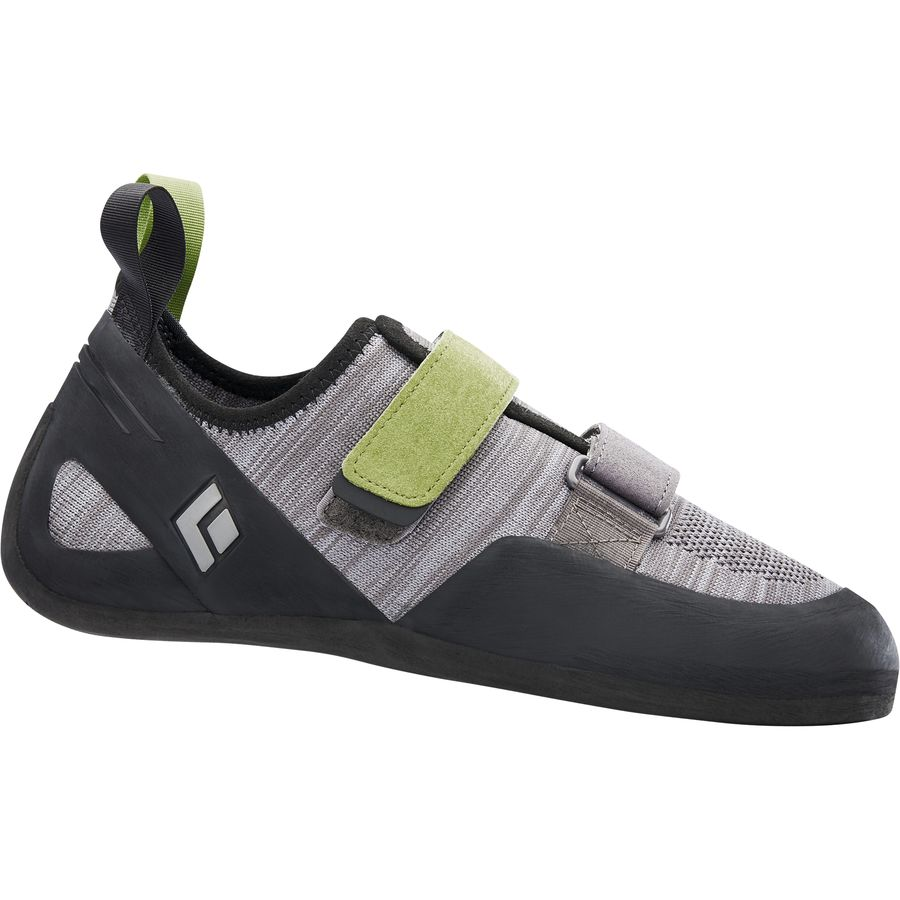
Black Diamond’s a force to be reckoned with in the climbing world, but they avoided crafting climbing shoes for a long time. In fact, when they finally announced the launch of their climbing shoes, which took a purported 5 years to develop, they quoted the Wu-Tang clan, saying, “I’m sorry it took so long, didn’t mean to make y’all wait. Good things take time to create.”
At the low end of Black Diamond’s lineup of climbing shoes is the Momentum, a shoe with a slipper-like flat last, meaning it’s not the downturned, uncomfortable shape of a hooked, aggressive shoe. This makes it relatively comfortable and more tuned to the needs of beginners. The two-strap Velcro build is easily secured in place, and when the dogs are barking after a tough climb, two loops over the heel enable you to wrench it from your sweaty foot quite easily. The Momentum is recommended for slab climbing—sloped, less steep ascents—as opposed to vertical or overhanging rock, though progressing beginners will happily trust these comfortable shoes at the high end of their limits.
Bottom line: Learning to climb is a tough road as it is, don’t make it tougher with a pair of shoes that cause your feet to cramp and blister. These shoes are comfortable, affordable, and perfectly suited for the needs of beginner climbers who are hoping to become intermediates.
Best for: Slab climbing, all-day climbing, long days at the gym or the crag.

For female climbers, the need for a women’s specific harness is paramount. Petzl’s Luna harness not only sits at an affordable price point, but the adjustable, padded leg loops and waistbelt hug the body without causing unwanted pinch points, either. Our tester was quick to note how comfortable the Luna is, especially after wearing in the initially stiff material.
The Luna comes equipped with five gear loops, so when making the transition from gym climbing to single- or even multi-pitch outdoor climbing, it’s up to the challenge. The front loops are notably stiffer—perfect for hauling gear and easing the use of carabiners—while two side rear loops are more flexible, allowing the comfortable use of a backpack, and a center rear loop is optimized for hauling shoes and remaining gear.
Bottom Line: Forgiving on both hips and wallet, this harness is prepped for gym and crag—it’s not a beginner option per se, but it will keep beginners comfortable and more intermediate climbers sending.
Best for: progressing from gym to rock, beginner climbers seeking comfort, outdoor intermediates looking for a harness that can haul

You’ll never see climbers rocking helmets at the gym, and some climbers even choose to forgo a helmet outside as well. However, we’re big fans of helmets when climbing outside, because, frankly, head injuries are zero fun. That’s why we recommend that you keep your noggin safe with this affordable hybrid helmet from Petzl. The Boreo has a form-fitting inner liner that’s comfortable even when sweaty. The tough ABS outer shell protects the EPP and EPS foam liners from being damaged by daily use so that they’re in good shape should a serious impact occur.
Our tester noted that she felt secure in the Boreo, especially with regards to impacts that come from the rear, commenting that the coverage felt more significant than helmets she’d tried in the past. Dig into the Boreo’s technical specifications and it turns out that she was on to something: the Boreo actually sports Petzl’s Top and Side protection, meaning that it’s designed to handle fallen rock as well as unforeseen lateral impacts. All climbing helmets are designed to handle rock falling from above, but they don’t necessarily offer sufficient protection if you’re taking a fall and slam your head into the wall at a different angle.
Bottom Line: The Boreo offers multi-directional protection, at an affordable price. The lightweight helmet can be used climbing and mountaineering, among other activities, and it’s a piece of gear that’s well worth the investment.
Best for: Stepping up to climbing outside, protecting your head from multi-directional impacts in a multitude of climbing scenarios.

Choosing a rope is a tough decision. There are thick ropes and thin ropes, long ropes and short ropes, treated ropes and untreated ropes—the options go on and on. The Beal Booster balances a middle ground that most climbers will find enticing: it’s Dry Cover treated, meaning that it will resist the best efforts of dust, water, and abrasive rock. The 9.7mm size is on the skinny side of the spectrum but it’s not an ultra thin rope—an Italian pasta maker might say it’s more spaghetti than angel hair. Whether you’re a beginner climber looking for a rope that will withstand a wetter environment or a more advanced climber retiring a tired old rope, Beal’s Booster series of ropes has been around for decades, and the updated, Dry Cover-treated rope is a trustworthy, durable, and intelligent option. If the rope is too steep for your taste, consider Beal’s Karma—an untreated and exceedingly affordable option.
Bottom Line: Available in several sizes, the Beal Booster’s Dry Cover treatment and thin (but not too thin) size makes it an attractive rope for outdoor climbers across the board.
Best for: outdoor climbing, use in wetter environments

Belay devices can be cheap—but this is not one of those belay devices. However, for a premium price, Petzl’s GriGri+ is an easy-to-use option that is reliable and well-suited for the needs of both beginners and advanced climbers alike.
Modernized from its beloved predecessors, the updated GriGri+ can be used with all single ropes ranging from 8.5 to 11mm, it’s built with a bombproof stainless steel plate, and it sports an “anti-panic handle.” Essentially, this handle allows the belayer to control the speed of the descent—ease it back and the climber begins to descend slowly, crank it further and they speed up, and if you ever pull too hard, the mechanism actually catches, locks, and the descent comes to an abrupt halt.
Our favorite aspect of the GriGri+ and the reason we’ve included it in this buyer’s guide for beginner climbers is that it has two modes: top rope and lead. The top rope mode is awesome for learning to belay, as it helps take up slack. When you start dabbling with sport climbing, lead mode is just a quick switch away.
Bottom line: Belay devices vary in price for a reason—the GriGri+ is a top-of-the-line option that helps instill confidence in belayers, whether they’re beginners or advanced climbers.
Best For: Staying safe, indoor and outdoor climbing, beginners to advanced climbers.

Most climbers end up tacking their kits together bit by bit, adding a piece of gear here, a sling there—ask around and you’ll soon realize that building a “rack” is a long and perhaps even endless task. Trango, however, at least makes entry into sport climbing pain free with this simple yet comprehensive kit: it includes ten Phase quickdraws, four React Screwlock Carabiners, and two 60 cm low-bulk slings.
Trango’s craftsmanship is high quality, and by buying in bulk, you get an awesome package for a more than reasonable price. While you’ll supplement this kit as you continue to develop your skillset and expand your climbing repertoire, Trango’s Sport Climbing Kit is a fantastic place to start. Of course, we can’t stress this enough: take classes at your local climbing gym or climb with more experienced friends who will show you exactly how to use this gear. Gear only keeps you safe if you know how to use it.
Bottom Line: Well-built and packaged in a beginner-friendly kit, this selection of basic sport climbing essentials from a storied brand will help gym climbers make moves to get after it outside.
Best for: Starting a sport climbing career from scratch.
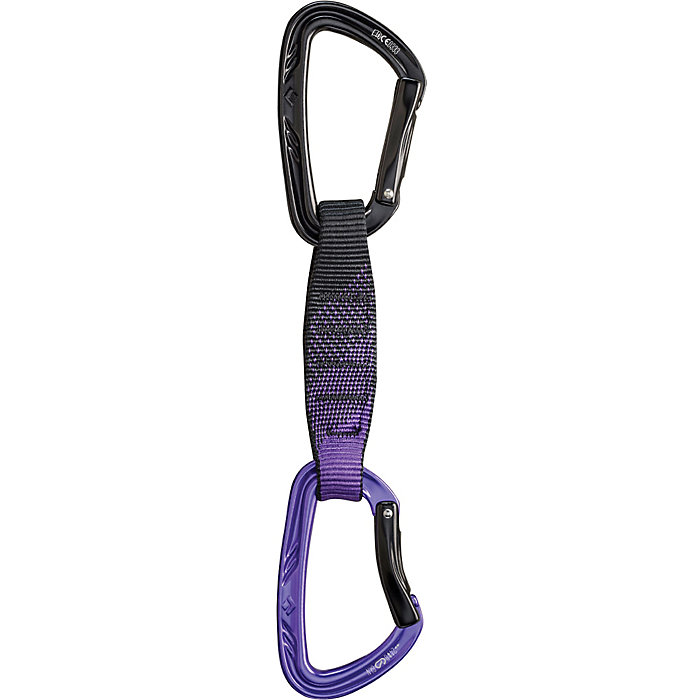
If you’re looking for a high-quality quickdraw, the good folks at Black Diamond have been crafting them for years—matter of fact, they’ve continually been pushing climbing gear innovations for decades now. Today, Black Diamond offers a range of quickdraws, including the more affordable wire-gate FreeWire line that’s ideal for climbers who are starting from scratch, as well as the Nitron, a robust yet lightweight quickdraw that’s a top choice of their sponsored athletes.
The Nitron is a bit more expensive, and unfortunately doesn’t come in a six-pack like some of Black Diamond’s other quickdraws, but it does sport Black Diamond’s premium features: two hot-forged carabiners are connected by light yet stiff polyester webbing. The carabiners sport a straight gate up top and a curved gate on the bottom to facilitate quick, clean clipping (this also makes it easy to organize your quickdraws on your harness or sling). Plus, the snazzy, unmistakable purple gleam of these bad boys make it easy to keep an eye on your gear at a crowded crag.
Bottom Line: Here are three facts. Black Diamond makes some of the finest, most trustworthy quickdraws on the market. Their athletes are some of the best in the world. These quickdraws are a favorite of those athletes. Need we say more?
Best for: Sport climbing, relying on the safety equipment of the pros, trusting your gear
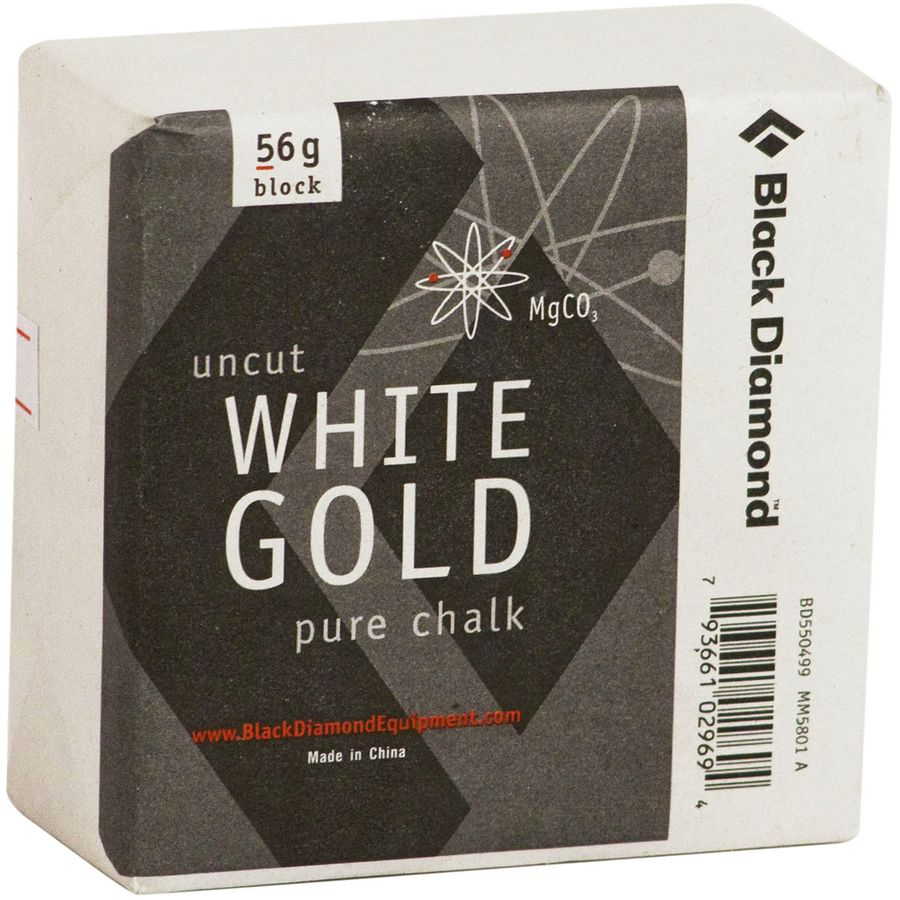
What climbing shoes are to your feet, chalk is to your hands. Well, kind of… Black Diamond’s Uncut White Gold Chalk comes in a huge, Costco-sized tub with a mix of fine white powder and boulders of uncut goodness. Toss a few chunks into your chalk bag and get to climbing—this powder has a magical way of keeping your hands dry and your fingers locked!
Bottom Line: Hands get sweaty when you get nervous? Fear not and trust BD’s Uncut White Gold.
Best for: climbing of all creeds
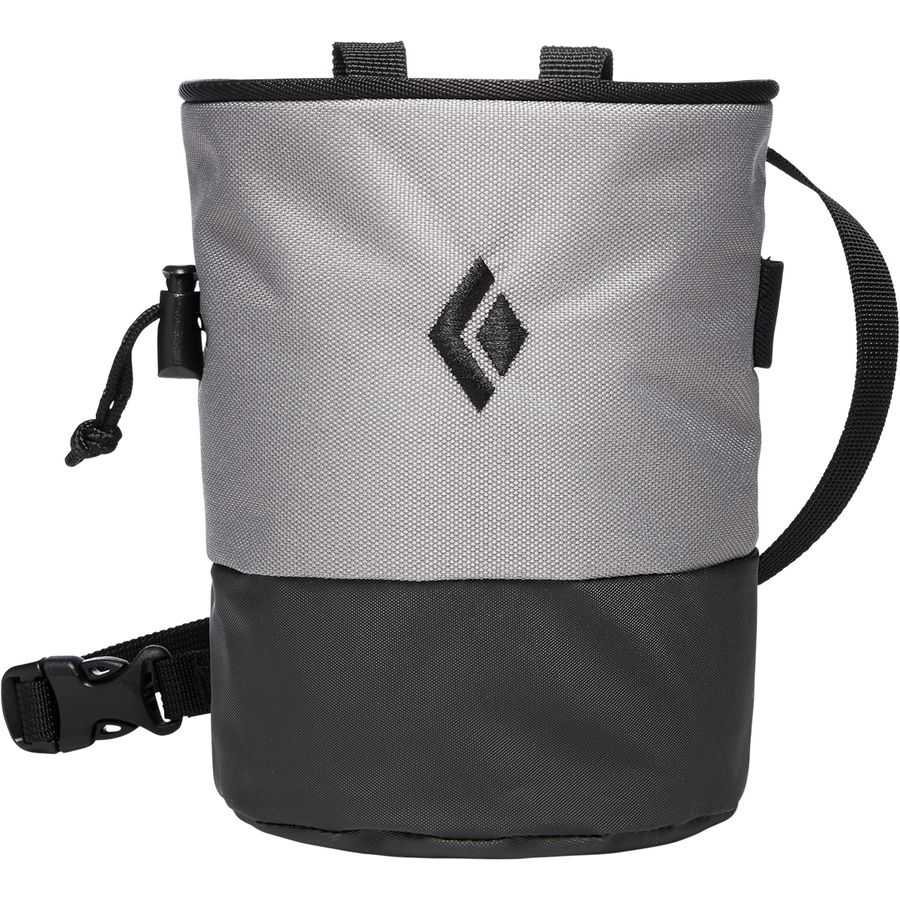
Almost as essential to your climbing kit as harness and shoes is a chalk bag—without one, you’ll succumb to sweaty hands and suffer the consequences of missed holds. Whether you’re climbing at an air-conditioned gym or a sun-smeared desert crag, a chalk bag will allow you to climb to new heights. We’re big fans of Black Diamond’s Mojo Zip Chalk Bag, as it pairs simple yet bold dual colorways with a classic cinch design. Our testers loved the simplicity of the bag, and the lightweight, like-nothing’s-there feel of the thin waistbelt. The key element of the Mojo, however, is the bag’s zipper compartment—which, as it turns out, is perfect for stashing your key in.
Bottom Line: A chalk bag is necessary, and the Mojo ticks all of the boxes while adding a touch of flair.
Best for: Bouldering, indoor and outdoor climbing

Belaying your climbing partner can be absolutely brutal on your hands, especially when the routes are rad and the day is long. The Direct Route gloves are a tight-fitting, goat-leather shield for your digits, and they’re well-equipped to keep blisters at bay.
Our testers loved the Direct Route gloves in both warm and cool temps: when the sun’s out, the polyester and spandex fabrics are sufficiently breathable. When the sun dips and shadows wrap the high alpine in darkness, the Direct Route adds enough warmth to send one last route (or three).
The goat leather palm and cow suede overlays provide a welcome grip, and the glove isn’t so bulky that you’ll notice a significant loss of handling. Whether you’re rocking them for warmth or to ward off ripped skin, these gloves are a smart addition to your climbing pack.
Bottom line: You can climb harder and longer if your hands aren’t mangled whilst belaying. The Direct Route subsequently stretches out your sessions.
Best for: Belaying, without the blisters.

You might not think you need a climbing-specific backpack. And the truth is, you might not need one, and any old pack will do. However, after checking out the features of Mammut’s Neon Smart backpack, don’t be surprised if you start salivating, at least a little bit.
The main draw of this pack is that it zips open—and we’re talking open. The entire pack unfolds like a nylon Transformer: there are several internal pockets for your harness, shoes, etc., loops for clipping carabiners and organizing your quickdraws, a removable rope tarp, and even a tiny little carpet (picture a zip-out welcome mat) to wipe off unwanted dirt.
For a 35-liter pack, the Neon Smart fits a surprising amount of gear, and our testers were able to stuff 10 quickdraws, a rope, harness, and a helmet inside while still having plenty of room for snacks, water, and an extra layer. There’s a beautiful utility of this pack—every piece of gear has it’s place.
Bottom Line: We live in the “smart” world. Smart phones, smart cars, smart houses, the list goes on. Mammut’s managed to make a truly smart backpack without equipping it with bluetooth.
Best for: packing your climbing gear intelligently.
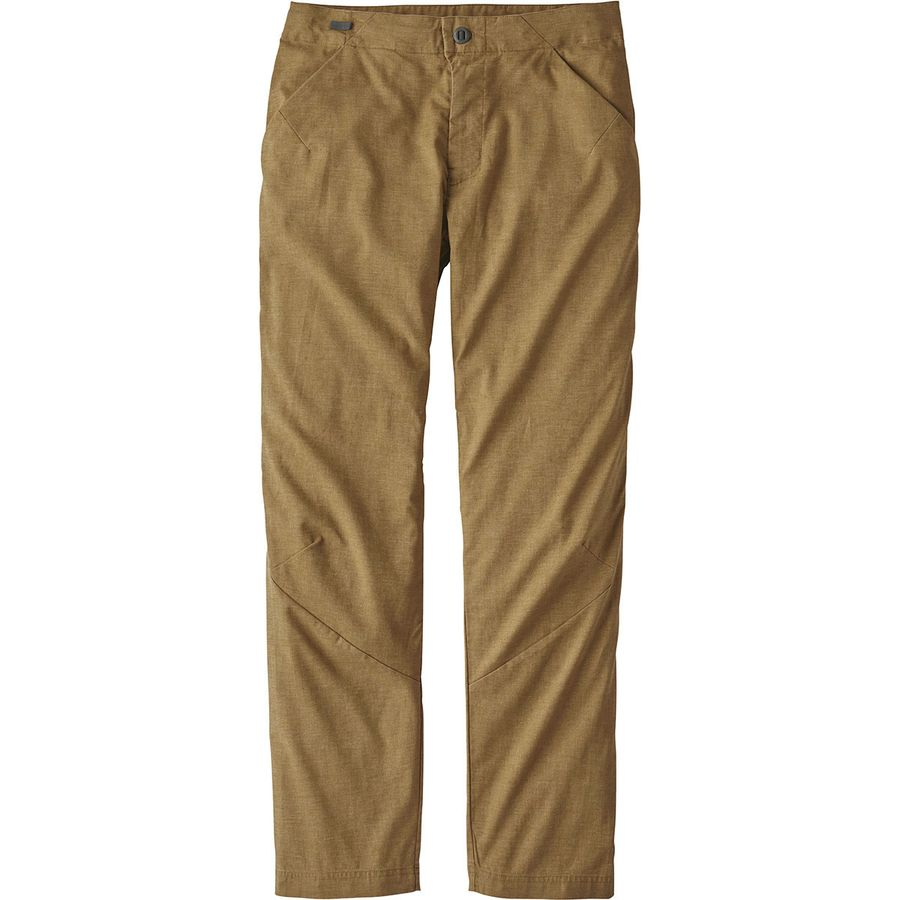
After three months of relentless use, our tester actually lost these pants. Poof, they disappeared. Whether they were blown off the laundry line or lost and found by a lucky climber, heaven only knows. The point being, though, that upon losing them, he felt a deep and aching longing, having come to love them intimately over those few months.
The pants are well-suited for climbing: the hemp fabric is just the right amount of stretchy, surprisingly durable, and breathes like a meditating monk. Lightweight and thin, these pants actually keep you way cooler than you might think. The tapered legs mean that flowing fabric is never getting in the way of a technical move, and though the overall fit is on the slim side, the crotch area is not constricting and the pockets remain comfortable beneath the straps of a harness.
Lastly, the style is such that these need not be solely “climbing pants”—rather, they’ll work in a slew of other scenarios as well. That is, assuming they’re not ripped and covered in dirt and chalk. Although, to be honest, isn’t that kind of the point?
Bottom line: These slick, comfy, slim-fitting pants are killer at the crag—and everywhere else.
Best for: Bouldering, big walls, and beyond—anything and everything, especially if it’s under the sun.
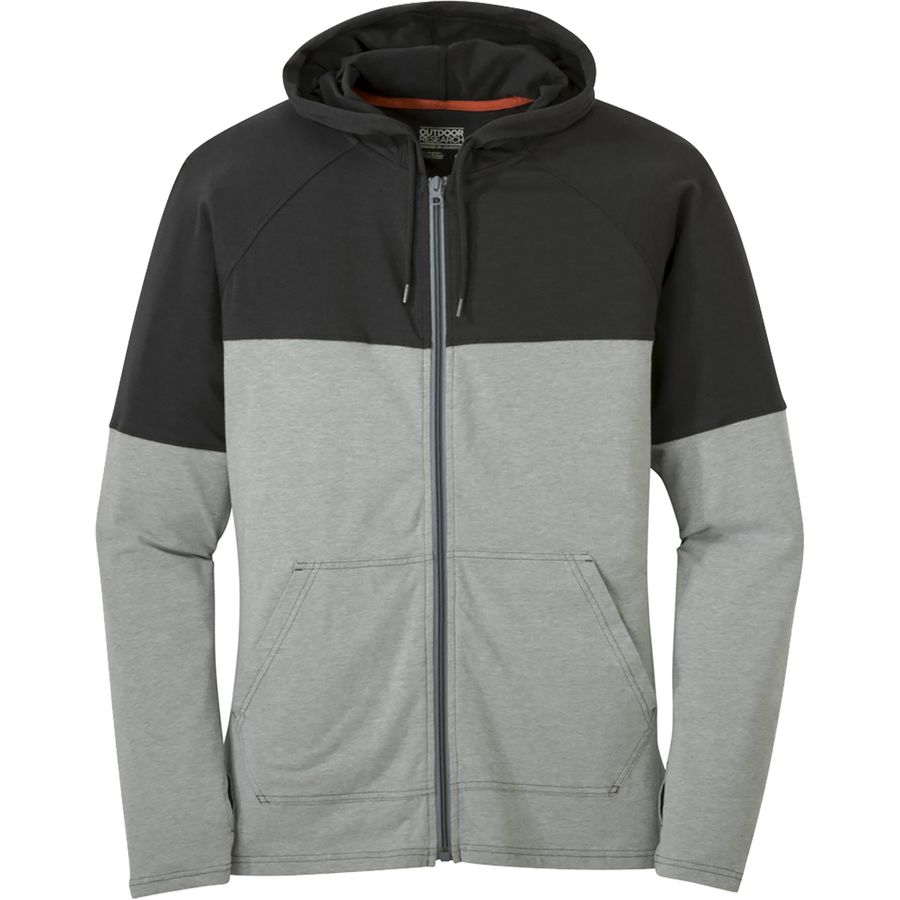
We’re head over heels for this hoodie. Outdoor Research has enlisted a fabric blend that performs well when pushed hard yet remains comfortable in more casual settings. Many brands forgo the use of cotton altogether in technical apparel, but this piece is 58% cotton, 39% Cordura nylon, and 3% spandex—the result is a delightful trifecta of comfort, durability, and stretch. It won’t tear or rip easily thanks to the breathable Cordura, which makes it stronger than your typical cotton fabric. The spandex injects the Fifth Force with sufficient stretch, essential when reaching for tough and trying holds.
Keep this in mind, however: the hoodie is lightweight—we’re talking light as a feather—and if you’re looking for a thick, cozy hoodie, definitely look elsewhere. This piece is best used on breezy summer evenings, warmer spring and fall sends, and in air-conditioned climbing gyms. We’ve also taken to wearing it on runs and cross-training workouts—the snug hood makes you feel a bit like Rocky when you’re hitting your stride.
Bottom line: This lightweight champ is our favorite hoodie in its weight class. No matter where or how you rock it, the Fifth Force is a force to be reckoned with.
Best for: Climbing, training, jogging, everyday use

For warm weather climbs, a tank top is a smart choice (assuming you’re slathering your shoulders with sunblock). Eddie Bauer’s moisture-wicking Infinity tank is lightweight—so much so that it’s barely there when you’re charging up a trying route. This isn’t necessarily a “climbing tank” by any means, but that’s what our testers been using it as (well, she’s been running, biking, and hiking in it, too). The Eddie Bauer piece has been a favorite from summer through fall, whether climbing indoors or out. The polyester and spandex fabric is quick-drying and comfortable—requisite for long days on the wall.
Bottom Line: A basic, do-it-all tank that we’ve commandeered for climbing

Crafted from a blend of polyester, merino wool, and polyurethane, the Alnasaca is everything that a climber wants in a t-shirt: soft, slim-fitting, stretchy, and stink-proof. The antimicrobial properties of wool makes this shirt primed for multi-day climbing trips far from the land of laundry machines. Not to mention, that wool also helps keep the UPF 30+ shirt cool when climbing in warm locales. The shirt has a welcome stretch to it, as well as a slim, European fit that’s cut fairly high on the upper arms. The Alnasaca’s at home at the gym and at the crag, but it’s also stylistically prepared to do battle with mountain town pubs, city streets, and trips back home to meet your significant other and/or climbing partner’s parents.
Bottom Line: A stylish, comfortable, and sweat-ready favorite from a classic climbing brand.
Best for: Climbing—and life in general.